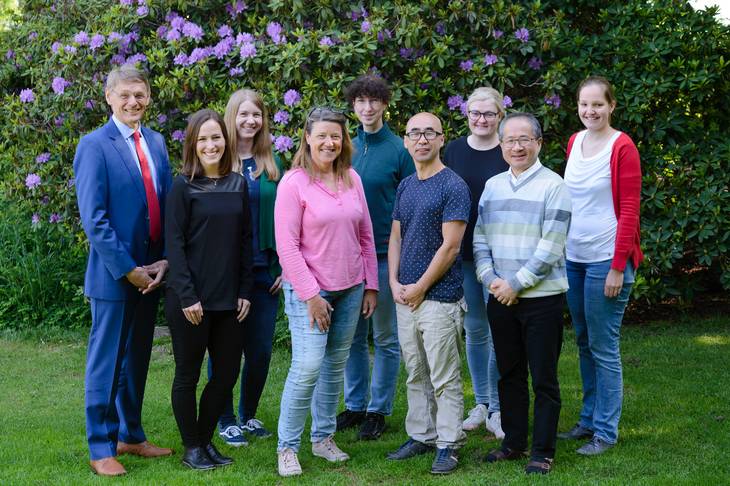
Univ.-Prof. Dr. med. Weiqi Zhang
Tel.: +49 (0)251 / 83-56610
E-Mail: Weiqi.Zhang(at)ukmuenster(dot)de
CV

Molecular Neuroscience & Experimental Psychiatry: From Gene over Brain Function to Mental Illness
Mental illnesses have a multifactorial etiology with a high heritability. Different polymorphisms of candidate genes are believed to susceptibility factors that increase the risk to develop a psychiatric disorder. Nowadays, it is general accepted that the individual risk for mental illness is composed of the interplay of genetic susceptibility and environmental factors. Here, epigenetic mechanisms are believed to be the underlying mediators between genes and environment. Until now, the pathogenetic mechanisms of the psychiatric diseases such as autisms, anxiety disorders as well as schizophrenia are unknown. Identification of the underlying molecular mechanisms is thus crucial for understanding of pathogenesis and for developing novel therapeutic targets for these diseases.
Using a combined molecular biological, physiological and behavioral approach, we investigate the pathogenetic mechanisms of these diseases on molecular, cellular, network and behavior level in animal models:
a) investigating the functional role of different key molecules, such as neuregulin, ErbB4, RGS, neuroligin, neurexin, DHHC7 etc., in brain function and behavioral endophenotypes.
b) analyzing epigenetic processes and their functional consequences to uncover the underlying mechanisms which differentially regulate susceptibility genes using different mouse models.
c) studying genetic and environmental influences on behavioral endophenotypes using mutant mouse models

Univ.-Prof. Dr. med. Weiqi Zhang
Tel.: +49 (0)251 / 83-56610
E-Mail: Weiqi.Zhang(at)ukmuenster(dot)de
CV